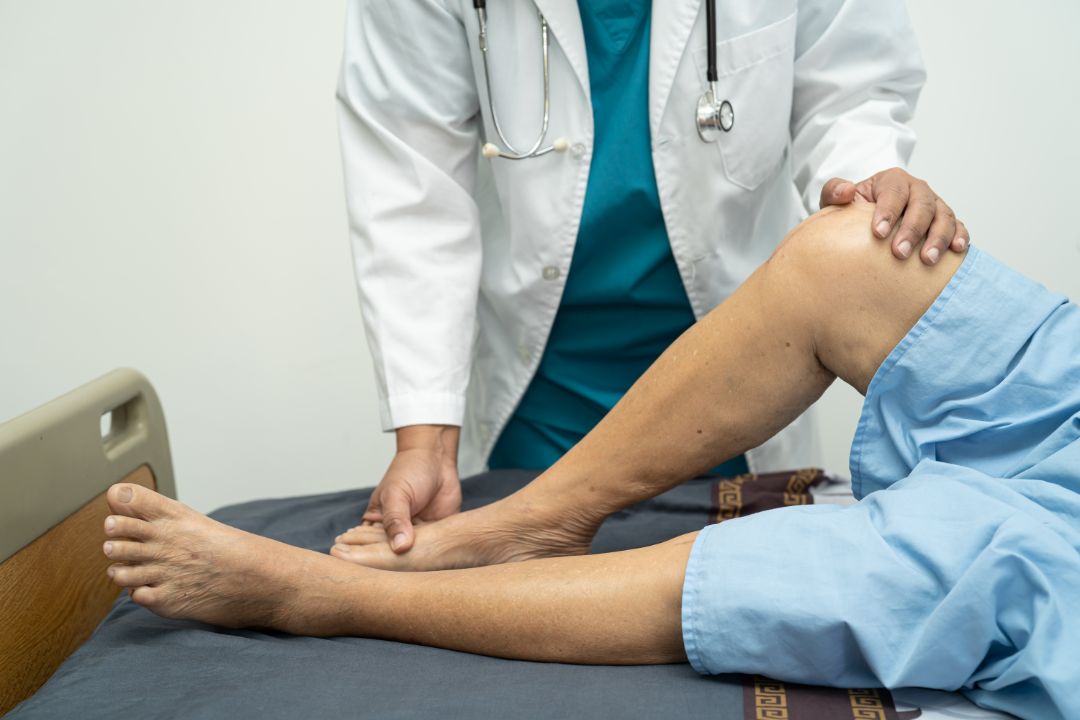PCL injury is a common knee injury that can result from various activities, including sports, falls, and car accidents. When diagnosing PCL injuries, healthcare professionals may use physical examinations, imaging tests, and other diagnostic tools to identify the extent of the injury and develop a treatment plan. Treatment options for a PCL injury can range from non-surgical approaches such as PCL rehabilitation exercises and physical therapy to surgical interventions like PCL surgery.
In addition to treatment, it is important to focus on prevention strategies to reduce the risk of PCL injuries. This section will cover effective techniques like PCL exercises and strengthening to help maintain optimal knee health and mobility, ultimately reducing the risk of PCL sprains.
The posterior cruciate ligament (PCL) is one of the four ligaments in the knee that connects the femur bone to the tibia bone. Its main function is to keep the tibia bone from moving too far backward relative to the femur bone. A PCL injury occurs when this ligament is stretched or torn, resulting in knee ligament damage.
There are several ways in which PCL injuries can occur. One of the most common causes is a direct blow to the front of the knee while it is in a bent position. This can happen during a car accident, a sports collision, or a fall. A PCL injury can also occur from a twisting motion or hyperextension of the knee.
Diagnosing a PCL injury typically involves a combination of physical examination and medical imaging. A healthcare professional will first ask the patient about their symptoms and how the injury occurred.
During a physical exam, the healthcare professional will test the range of motion in the knee joint and look for any signs of instability. They may perform the posterior drawer test, which involves pulling the tibia backward to assess the integrity of the PCL.
In addition to a physical examination, medical imaging can help confirm a PCL injury diagnosis. X-rays can rule out other potential injuries like fractures, while MRI scans are particularly useful for detecting soft tissue damage like PCL tears. CT scans may also be used to provide a more detailed view of the knee joint.
Different treatment options are available for individuals with PCL injuries, depending on the severity of the condition. Treatment approaches may include non-surgical interventions such as PCL rehabilitation, and physical therapy, and surgical interventions like PCL surgery.
Non-surgical treatment for a PCL injury often involves PCL rehabilitation and physical therapy. This treatment approach may be recommended for people with low-grade PCL sprains or partial tears where the PCL can still provide some stability to the knee joint.

Photo Credit: chormail, Envato
Physical therapy for PCL injuries may include exercises to improve the knee range of motion, strengthen the muscles that support the knee joint, and reduce knee pain and swelling. Your healthcare professional may also suggest other treatments such as ice therapy, electrical stimulation, and ultrasound therapy to help relieve pain and promote healing.
Your healthcare professional will develop an individualised rehabilitation program based on your injury’s severity, physical health, and activity level.
Surgical intervention may be recommended for individuals with severe PCL injuries, such as complete PCL tears, or for those who have not responded to non-surgical treatments. PCL surgery involves reconstructing the PCL using a graft from another ligament in your body or from a donor.
The recovery process after PCL surgery can take several months, and following your healthcare professional’s advice on rehabilitation exercises, activity level, and lifestyle modifications during this time is essential.
Your healthcare professional will discuss the benefits and risks of PCL surgery with you, including possible complications such as infection, nerve damage, and blood clots.
It’s essential to seek medical attention promptly if you experience any signs of a PCL injury, such as knee pain, swelling, or instability. Early diagnosis and treatment can help improve your chances of successful recovery and reduce your risk of long-term knee problems.
Preventing a PCL injury should be a priority, especially for athletes involved in high-impact sports. Engaging in PCL exercises and other strengthening techniques can help reduce the risk of PCL sprains, tears, or other knee injuries. Here are some of the most effective prevention strategies:
Strong quadriceps muscles can help support the PCL and reduce the risk of injury. Exercises like squats, lunges, and leg presses can help build up your quadriceps and provide greater stability for your knee joint.
Tight hamstrings can put added pressure on the PCL, making it more susceptible to injury. Be sure to stretch your hamstrings regularly, especially before and after exercise, to help keep them flexible and prevent strain.
Using proper technique during sports and exercise can help minimise the risk of a knee injury. Pay attention to your form during activities like running, jumping, and pivoting, and be sure to use supportive footwear.
Wearing proper protective gear can help reduce your risk of a knee injury. This may include knee pads, braces, or other supportive equipment to keep your knee joint stable and protected during high-impact activities.
Excess weight can put added pressure on your knee joint, making it more susceptible to injury. Staying within a healthy weight range can help reduce your risk of knee and other sports-related injuries.

Photo Credit: Pressmaster, Envato
Following these prevention strategies can help reduce your risk of a PCL injury and other knee-related problems. Additionally, consult with your healthcare provider before beginning any exercise or training program to ensure it is safe and appropriate for your individual needs and fitness level.
A PCL injury refers to damage or tearing of the posterior cruciate ligament, which is one of the major ligaments in the knee joint.
PCL injuries can occur due to various reasons, including a direct impact on the knee, hyperextension of the knee, or a sudden change in direction or twisting motion.
PCL injuries are diagnosed through physical examinations, imaging tests such as MRI or X-rays, and other diagnostic tools commonly used by healthcare professionals.
Treatment options for PCL injuries include non-surgical approaches such as PCL rehabilitation exercises, physical therapy, and surgical interventions like PCL surgery. The recovery process after treatment will also be discussed.
Several effective prevention strategies for PCL injuries include specific PCL exercises and strengthening techniques. This section will also provide tips and recommendations for maintaining optimal knee health and mobility.